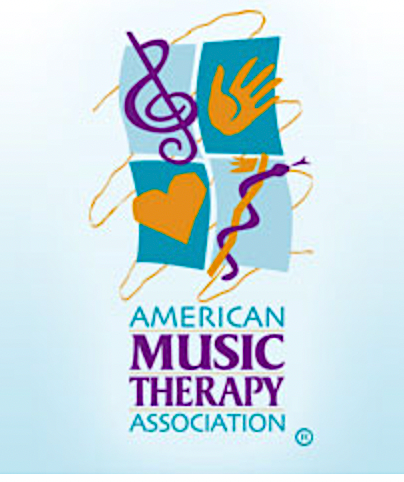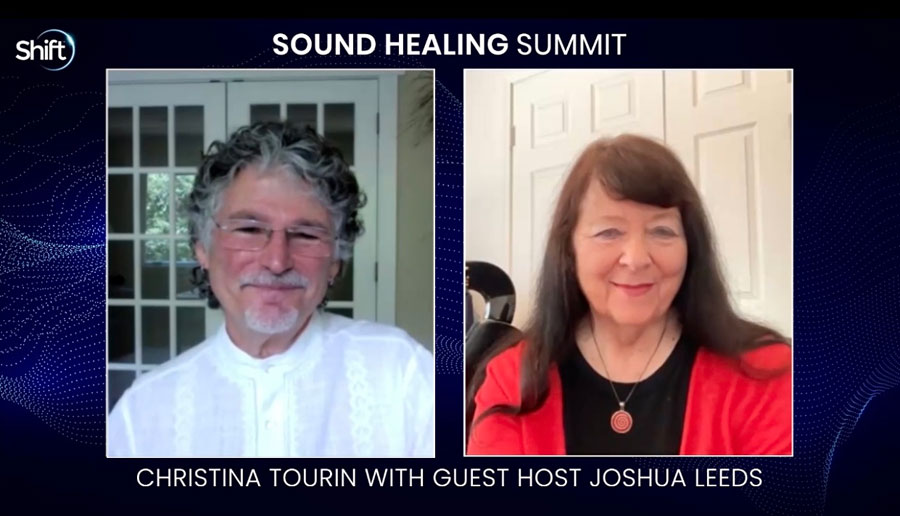Convergence
GLOSSARY
We begin with an explanation of terms used by different modalities to serve in various locations in healthcare settings.
Convergence of Music Modalities Worldwide
By Christina Tourin
The focus of the International Harp Therapy Program (IHTP), Music Thanatology Association International (MTAI), leaders of the American Music Therapy Association (AMTA), and National Standards Board for Therapeutic Musicians (NSBTM), has been to educate all those working therapeutically with music to the understanding of each modality of training and offering.
Below you will hear Barbara Crowe, Music Therapy Director Emeritus at Arizona State University and past president of the National Music Therapy Association- AMTA; Joshua Leeds, psychoacoustics; Jennifer Hollis, president of MTAI; Stella Benson, (passed) board member of NSBTM; Sarajane Williams of the Vibroacoustic Harp training program; Don Campbell (passed) co-founder of Aesthetic Audio Systems and Christina Tourin, director of IHTP, NSBTM founding board member and music therapist.
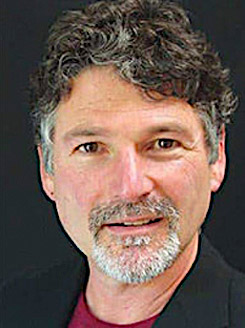
Psychoacoustics

Music Therapy

Therapeutic Music

Therapeutic Harp

Music Thanatology

Vibroacoustic Harp

Aesthetic Audio Systems
What is the training and certification process for your modality?
- What is the scope of practice and pay scale for your modality?
- What is the history leading to your development?
- How do you see we can educate administrators of healthcare facilities and graduates working in the field to understand the differences and build a comprehensive therapeutic music program uniting all those with unique and specialized trainings?
- How would one determine a pay scale so that one another is not undercut but at the same time recognized for the amount of training they have achieved?
We invite you to listen to the recordings on our CONVERGENCE. See below.
The outcomes of these recordings include very informative key points that everyone in healthcare facilities and the therapeutic music field should be aware of. Through education and respect for the various trainings, unification of music in healthcare can take on an important role. The lack of knowledge of the various trainings can lead to mis-use of skills and positive results for the clients and patients.
To offer a brief overview here, we will recap the titles, training and best use of each of the modalities
MUSIC THERAPY
Music Therapist – MT – Music Therapy is the longest established organization developed in the 1950’s educating students to become therapists. They are highly trained to assess, diagnose and treat clients toward goal-oriented outcomes. There is a strong emphasis on psychology and music skills.
THERAPEUTIC MUSIC
Therapeutic Musicians – TM – Therapeutic music programs run from 1-2 years of training and use the intrinsic value of music to address the needs of an individual. Within this category some TMus use their music passively in their work while others such as Therapeutic Harp Practitioners – CTHPs are trained to work interactively with their patients and clients. Therapeutic Musicians are not limited to only harp. Some programs trained in a variety of instruments while other programs focus only on voice and harp. TM’s serve in hospitals, hospices, nursing homes to list just a few of the places you will find them.
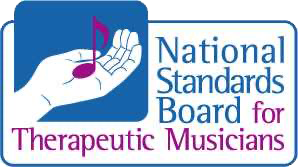

MUSIC THANATOLOGY
Music Thanatologists – CM-Th – Music thanatology is a 2 year program that unites music and medicine in end of life care. Prescriptive music is live music that responds to the physiological needs of the patient moment by moment in the ultimate journey at the end of life.
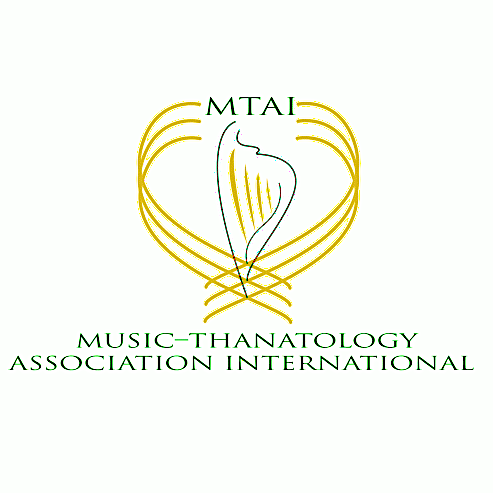
VIBROACOUSTIC HARP THERAPY
(VAHT) works by vibrating and resonating with the tissues of the body, thereby affecting physiological processes. It also affects the mental, emotional and energetic or spiritual aspects of the individual. The harp’s wide range of frequencies and overtones are capable of vibrating the dense, physical body as well as its energetic counterpart, providing multi-level stimulation and harmonization.
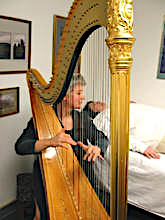
SOUND HEALING
Sound Healers – various titles – The majority of sound healers will use the vibrational aspects of sound and science to address the needs of their listeners. There are a variety of training programs from sound and brain research to the more spiritually oriented cultural practices and applications for sound healing.
VOLUNTEER MUSICIANS
Many musicians serve in healthcare facilities and usually you will find them in the lobbies playing as people enter the building. These people sometimes have gone through the volunteer department but have not gone through the intensive study of how music can affect the body – the mind and the soul of a person. They are viewed as entertainers and should be encouraged to study the effects of music and gain the knowledge and understanding of various medications, protocols, psychological aspects, musical skill building for improvisational work that is highly needed in a charged setting. These musicians, however, have the ability to bring an air of calm to the area. It should be noted that these areas should be public places where the listener has the opportunity to remain in the presence of the musician.
Part 1 FEB. Modalities Call- Psychoacoustics with Joshua Leeds (19 minutes)
A follow-up to this presentation by Joshua Leeds and Christina Tourin took place in 2024. What is the Future of Sound Healing on this Planet? Over the decades of research and the understanding of the power of Sound Frequencies on the human body and mind, entering the technological age has changed the future greatly. Take a listen of this SHIFT presentation where we see why, how and where the music industry is taking us into the future. This is a great part of our future of Convergence, bringing TOGETHER the advancements of Sound Healing.
Part 2 FEB. Modalities Call – A Look at Music Therapy with Barb Crowe(15 minutes)
Part 3 FEB. Modalities Call – A Look at Therapeutic Music with Stella Benson (13 minutes)
Part 4 FEB. Modalities Call – A Look at Therapeutic Harp with Tina Tourin (10 minutes)
Part 5 FEB. Modalities Call – A Look at Music-Thanatology with Jen Hollis (14 minutes)
Part 6 FEB. Modalities Call – A Look at Vibroacoustic Harp Therapy with Sarajane Williams (14 minutes)
Part 7 FEB. Modalities Call – A Look at Hospital Music Systems with Don Campbell (26 minutes)
Part 8 FEB. Modalities Call – Discussion on Unification of Modalities – Part 1 – All presenters (23 minutes)
Part 9 FEB. Modalities Call – Discussion on Unification of Modalities – Part 2 – Christina (12 minutes)
MusicTherapy.org
SoundAndMusicAlliance.org
MusicThanatologyAssociationInternational
Vibroacousticharp.com
AesthesticAudioSystems.com
GentleMuses.org
ThresholdChoir.org
In the spirit of educating those in the field, the Music Thanatology Association International held their annual conference in Ogden, Utah and Christina was asked to be a featured speaker on speaking about therapeutic harp as it is taught it in the IHTP and about her training as a music therapist. Here are 60 lovely music-thanatologists who reunited with friends from the past. Peter Roberts has become a legend in Australia as a music-thanatologist in their country and was featured on their national television station.

So, over the winter months we put together a CONVERGENCE in Australia featuring Peter Roberts on music-thanatology, Michael Johnson on music therapy, Mary Doumany on the Zen of the harp and Christina on Therapeutic Harp. We had 58 attendees from every corner of Australia and from New Zealand. The first day of the conference focused on information and workshops while the second day was a hands-on experience learning a sacred song by Peter and improvisation techniques by Christina.
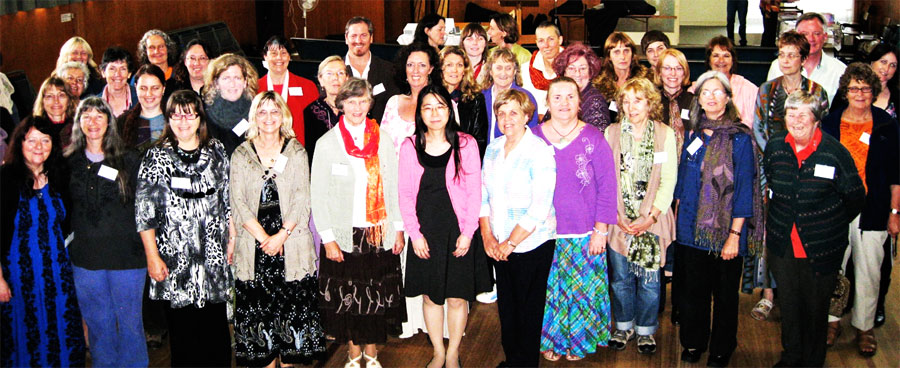
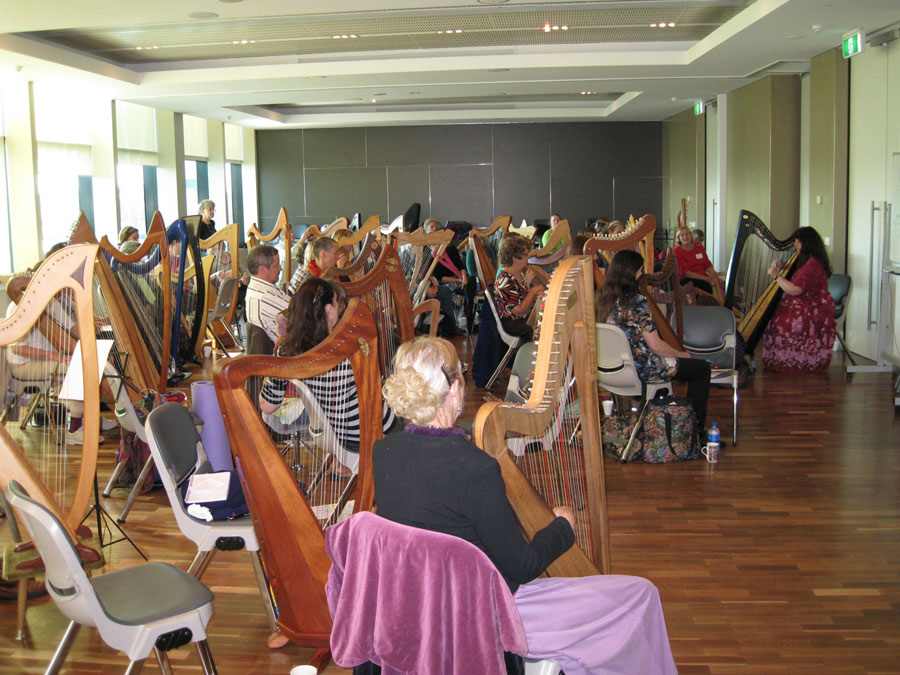
After Australia, Christina went to Brazil where she met up with Claudia Miranda, who she met at the World Harp Congress in Dublin, Ireland. Claudia is spear heading the therapeutic harp movement in Brazil as well as studying Music Therapy. Christina was busy with many presentations for doctors, nurses, complimentary departments of the hospital and a special trip to the Planetree hospital in Sao Paulo.
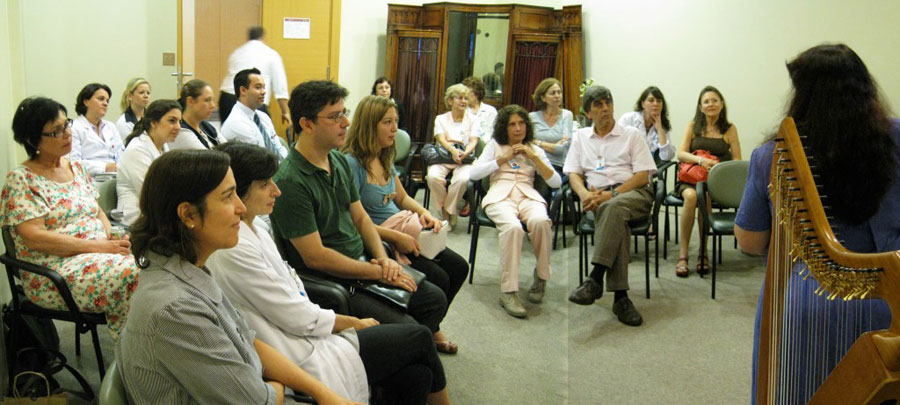
Our next Conference was held in San Diego, California. Serving as our Regional Conferences for CEUs for the IHTP program, we are also focusing on the topic of Convergence.

The organizers and presenters included Ann Dowdy on Music-Thanatology, Dr. Amy Lynn Kanner on Therapeutic Music, Christina Tourin on Heartmath® and Convergence; Deborah Noland, RN; Jennifer Taylor, Susan Zevenbergen; Dana Mosser; and Linda Hill Phoenix.
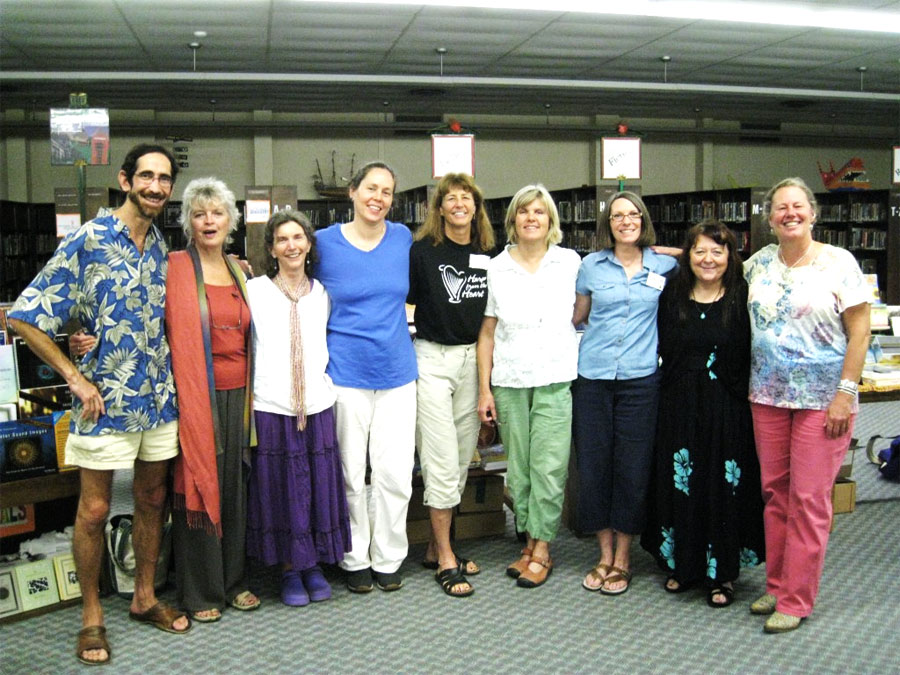

Special Needs Children and Vibroacoustic Harp Therapy – Laurence Marie, Moncton, New Brunswick. Laurence talked about her work from the perspective of “What is willing to meet me; the key to the autistic child’s world” and described an interesting VAHT case study. She also shared her experiences with Healing Harp Circles, Guided Meditations with Harp, and Harp Therapy. Laurence is self-employed in Moncton, N.B.
Harps by Hearts: Harp Circles for Cancer Patients – Bev Ross, Edmonton, Alberta
Bev works as a therapeutic harp practitioner at the University of Alberta Hospital (adult acute care) and the Cross Cancer Institute in Edmonton. Since 2007 she has facilitated harp circles at the Cross in a program that is constantly evolving. The session highlighted the challenges and rewards of offering harp to this patient group, considering the elements that make a harp circle “therapeutic”, and looked at some avenues for funding.

Keynote Address – Harp Therapy and Heart Math – Christina Tourin, founder of the International Harp Therapy Program, Mt. Laguna, California presented how the mind and heart are connected. With the aid of a biofeedback program, witness how the Five Qualities of Individualized music can take one out of the tense and frenzied red zone and enter into a calm and relaxed green zone. See what happens when the breathing tempo, the mood, the resonant tone, the genre of music desired and how certain intervals can make all the difference in helping a person to find that soothing place.
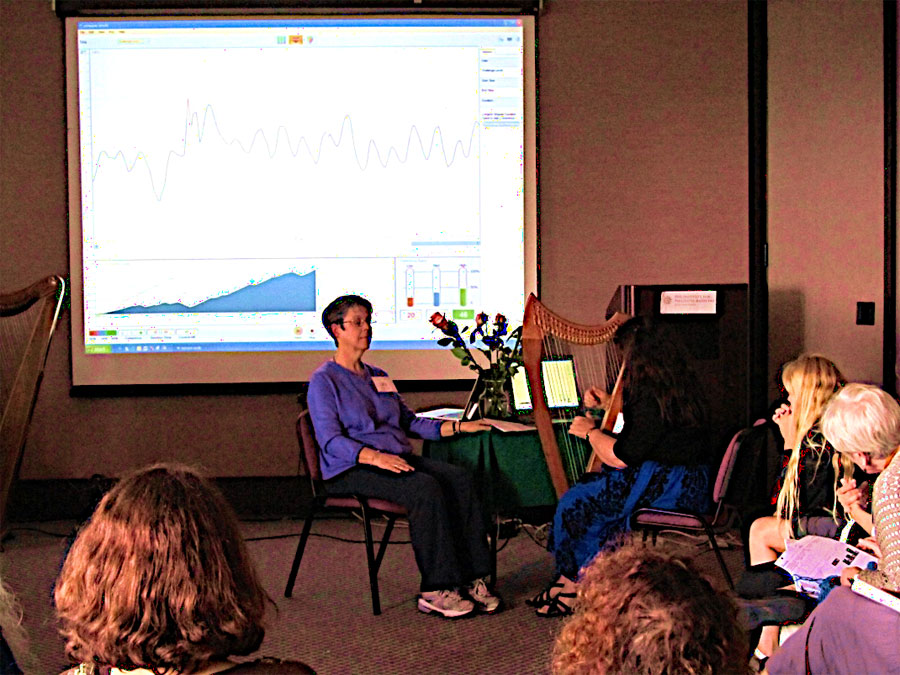
Our Canadians spread the word of Converging and educating about what the various modalities consist of and how we can all work together.

In August, we held another Convergence Conference in Werkhoven, Netherlands for our European community of harp players. This was followed by a training module.
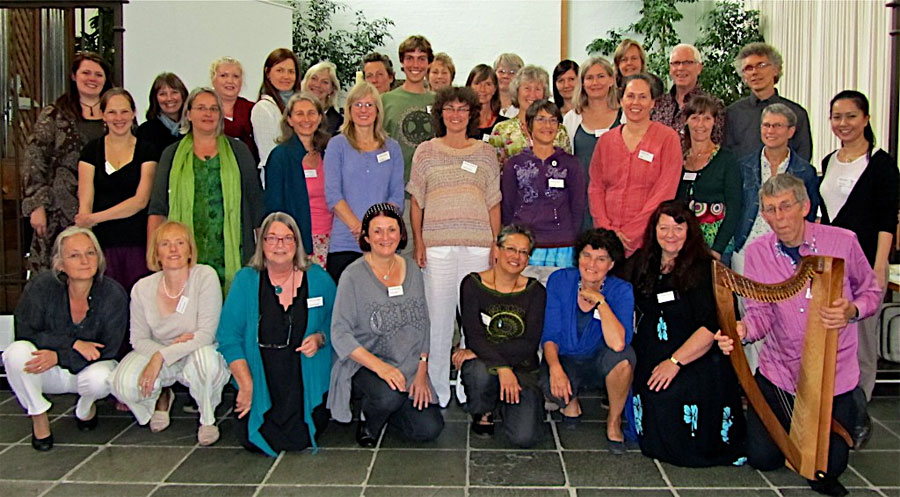
October took us to Winston-Salem, North Carolina for our SouthEastern Convergence conference. Cathy DeWitt from Shands Hospital presented her work along with presentations at the Wake Forest Medical Center Cancer Support Center and Judy Ranney gave a wonderful presentation on her work at the Moffit Cancer Center in Tampa, FL



October wrapped up our last CEU and Convergence Conference in Derbyshire, UK in conjunction with the Derbyshire Harp Festival, sponsored by Helen Naylor of the Little Welsh shop.


Together, learning the terminology and understanding how we can unite, we will make a strong presence in the field of Sound and Music healing.
JOIN US ALWAYS to educate and respect the work of each of the modalities! For when we work together, we are stronger in each of our offerings. Honor one another’s viewpoints and desire to help others to make this a better world. Be careful not to undercut financially whose knowledge and training surpasses yours. Know how to educate the facilities so that they can establish the best results for their patients and clients.
“Our world of senses is the world of effects. What
works in each being produces an image in others just as
plucking a string produces sound. Each being is a harpist
on someone else’s strings and at the same time a harp for
someone else’s fingers.”
—Robert Hamerling, poet, 1830-1889

